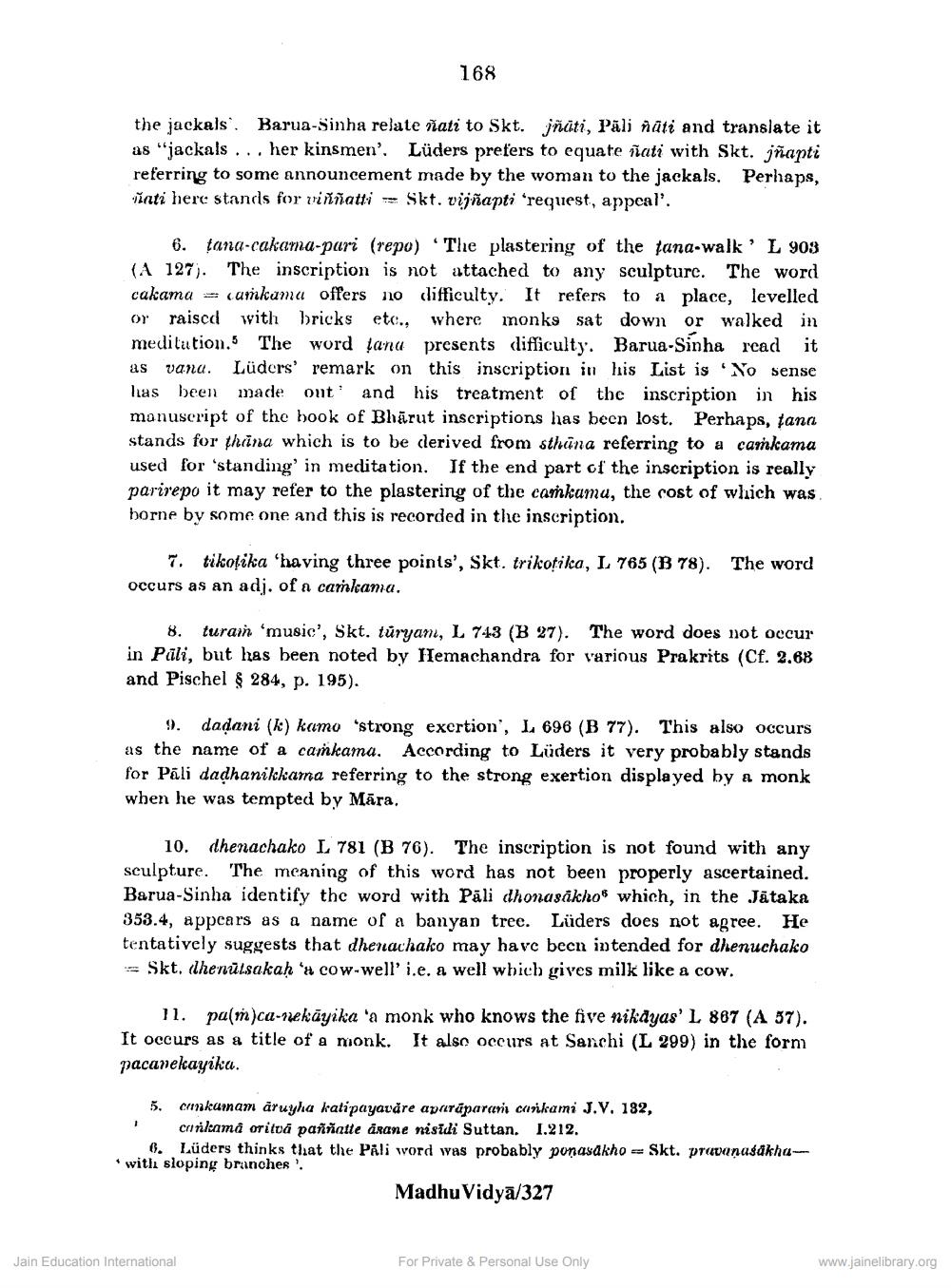________________
168
the jackals: Barua-Sinha relate ñati to Skt. jñāti, Päli näti and translate it as "jackals ... her kinsmen'. Lüders prefers to equate ñati with Skt. jñapti referring to some announcement made by the woman to the jackals. Perhaps, vinti here stands for viññatti - Skt. vijñapti "request, appeal'.
6. tana-cakama-pari (repo) The plastering of the fana-walk' L 903 (A 127). The inscription is not attached to any sculpture. The word cakama cumkuma offers no difficulty. It refers to a place, levelled or raised with bricks etc., where monks sat down or walked in meditation. The word ļanu presents difficulty. Barua-Sinha read it as vana. Lüders' remark on this inscription in his List is 'Yo sense luas been made out and his treatment of the inscription in his manuscript of the book of Bharut inscriptions has been lost. Perhaps, fana stands for thiina which is to be derived from sthuna referring to a cankama used for 'standing' in meditation. If the end part of the inscription is really parirepo it may refer to the plastering of the camkumu, the cost of which was borne by some one and this is recorded in the inscription.
7. tikoţika 'having three points', Skt. trikotika, L 765 (B 78). occurs as an adj. of a camkama.
The word
8. turam 'music', Skt. türyani, L 743 (B 27). The word does not occur in Püli, but has been noted by Hemachandra for various Prakrits (Cf. 2.68 and Pischel & 284, p. 195).
9. dadani (k) kamo 'strong exertion', L 696 (B 77). This also occurs as the name of a caṁkama. According to Lüders it very probably stands for Pāli dadhanikkama referring to the strong exertion displayed by a monk when he was tempted by Māra,
10. dhenachako L 781 (B 76). The inscription is not found with any sculpture. The meaning of this word has not been properly ascertained. Barua-Sinha identify the word with Pāli dhonasikhos which, in the Jātaka 353.4, appears as a name of a banyan tree. Lüders does not agree. He tentatively suggests that dhenachako may have been intended for dhenuchako = Skt. (henülsakah 'a cow-well'i.e. a well which gives milk like a cow.
11. pa(m)ca-nekāyika 'a monk who knows the five nikdyas' L 887 (A 57). It occurs as a title of a monk. It also occurs at Sanchi (L 299) in the form pacarekayika.
5. crmnkumam åruyha katipayaváre aparäparar cunkami J.V. 182,
carilamå orituå paññatte ärane nisidi Suttan. 1.212. 6. Lüders thinks that the Pali word was probably ponasakho - Skt. pravanasakha* with sloping branches !
Madhu Vidyā/327
Jain Education International
For Private & Personal Use Only
www.jainelibrary.org




